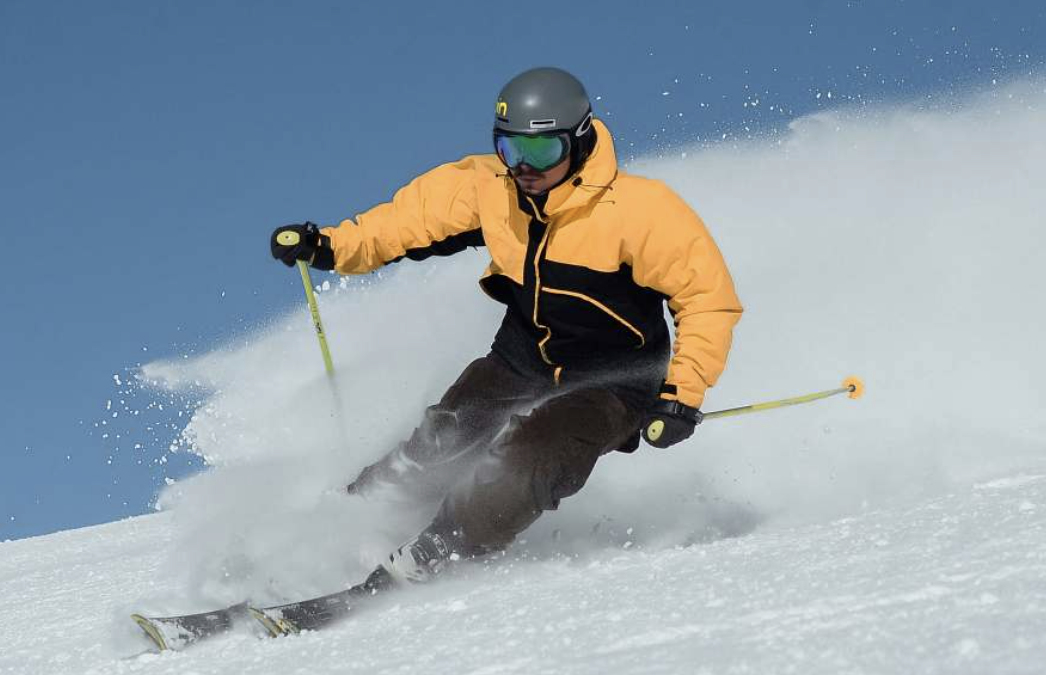Written for Telespine.com by Allie Cooper.
Whether you’re a fan of skiing, snowboarding, or even ice hockey, there’s plenty to look forward to in the snow and on the ice this season. Preparing for your favorite winter sports should always include injury prevention; after all, nobody wants to be saddled with an injured back. A study published by Sebastian Frederick Bigdon and colleagues have observed that the most common injuries resulting from winter sports include the spine, particularly thoracolumbar spinal injuries.1 One can also hurt their shoulders, neck, hips, and several other areas on their body on the slope. Knowing these common injuries that you’re likely to encounter can help you prepare. Here are several ways that you
can prevent the most common winter sports injuries:
The most common winter sports injuries
Injuries can happen to anyone at any time, whether that’s on the ice and the slopes. Here are the most common ones to watch out for:
Knee injuries
Your knees absorb most of the shock from your body when you walk, run, jump, or squat. This is thanks to the meniscus, a shock-absorbing cartilage.2During intense winter activities like skiing or skating, this part of your body absorbs much more force at a greater frequency. Overuse and falling increase the chances of knee injuries, such as torn ligaments, torn meniscus, fractured kneecaps, and knee dislocation.
Dislocated shoulder
Falling hard can put you at risk of dislocating your shoulder since this joint is more mobile, making it less
stable. It’s common for skiers to have it slip out of place and damage nearby ligaments or muscles in the
process. Getting treatment immediately is crucial to avoiding an immobile shoulder.
Whiplash
Neck injuries are commonly associated with winter sports such as snowboarding and skiing, with even
small falls causing some degree of damage to tissues. Major injuries such as whiplash occur when the
neck suddenly moves backward and then forward, pulling the muscles and ligaments beyond the normal
range of motion. You can sustain microtears in your muscles and ligaments and even dislocations in the
cervical and thoracic spine.
Lower back injuries
Back injuries can also happen while you’re on the slopes. This is due to the sudden twisting movements usually made during a fall. Mild falls may lead to simple muscle strains while more severe ones can result in lower back and disc injuries. Along with the knees, the back also bears the brunt of the force when landing in sports like snowboarding or even snowshoeing. This can cause lumbar strain and other lower back injuries.
Ankle sprains and fractures
Movements that are common in sports like snowboarding, skiing, and even skating can lead to the twisting or rolling of the ankle that can lead to injury. In fact, it’s so common that there is an injury recognized as snowboarder’s ankle. While mild sprains are usually remedied by ice packs and elevation, severe sprains are caused by torn ligaments that may require wrapping and crutches in order to walk. Fractures, on the other hand, need to be set in a cast for
six to eight weeks of healing.
Ways to prevent common injuries
Take regular breaks
Taking breaks is important because muscle exhaustion can put you at greater risk for the injuries listed
above and more. Take breaks frequently to hydrate, refuel, and recover. This will allow your overworked
muscles to rest and keep going for the rest of the day.
Use the appropriate protective equipment
Using the right protective gear when doing winter sports can minimize or prevent injury altogether. The most important piece you should have is a good quality helmet to prevent head trauma, which can be more fatal than other types of injuries. It is also important to use padding for your arms and legs as well as goggles to protect your eyes.
Contact a healthcare professional for pain management
If you sustain an injury on the slopes, then you may have issues with pain management after arriving home. If you can’t be seen by your primary care doctor in person, telemedicine can help. You may opt to reach out to a healthcare provider through Teladoc where nurses and other healthcare professionals can help manage your pain remotely.3
Make rehab exercises common practice
Most people think that physical therapy and rehabilitation exercises are only for athletes or people who have already been injured. However, doing these exercises can be extremely beneficial, even outside of injuries. Telespine emphasizes the importance of a good rehabilitation program to get as strong as possible.4 Telespine health coaches can help you strengthen and improve your musculoskeletal health by incorporating exercises such as yoga, core stability, and functional fitness. These help those with ongoing issues that may have resulted from injuries. Additionally, your coach can help create proactive lifestyle changes that are necessary to prevent these injuries versus a reactive approach.
Written for Telespine.com by Allie Cooper.
Resources:
- Bigdon, S. F., Gewiess, J., Hoppe, S., Exadaktylos, A. K., Benneker, L. M., Fairhurst, P. G., & Albers,
C. E. (2019). Spinal injury in Alpine Winter Sports: A Review. Scandinavian Journal of Trauma,
Resuscitation and Emergency Medicine, 27(1). https://doi.org/10.1186/s13049-019-0645-z - Posch, M., Schranz, A., Lener, M., Tecklenburg, K., Burtscher, M., & Ruedl, G. (2020). In recreational
alpine skiing, the ACL is predominantly injured in all knee injuries needing hospitalisation. Knee Surgery,
Sports Traumatology, Arthroscopy, 29(6), 1790–1796. https://doi.org/10.1007/s00167-020-06221-z - Virtual Care & Telehealth Solutions – Teladoc Health. (2020, October 30). Teladoc Health.
https://www.teladochealth.com/ - Barnes, M. D. (2021). Can You Heal Back Pain Online? | Telespine, Inc. Telespine.
https://telespine.com/can-you-heal-back-pain-online/
